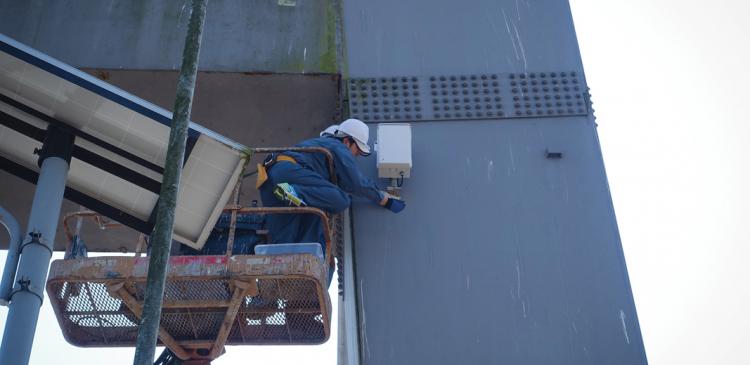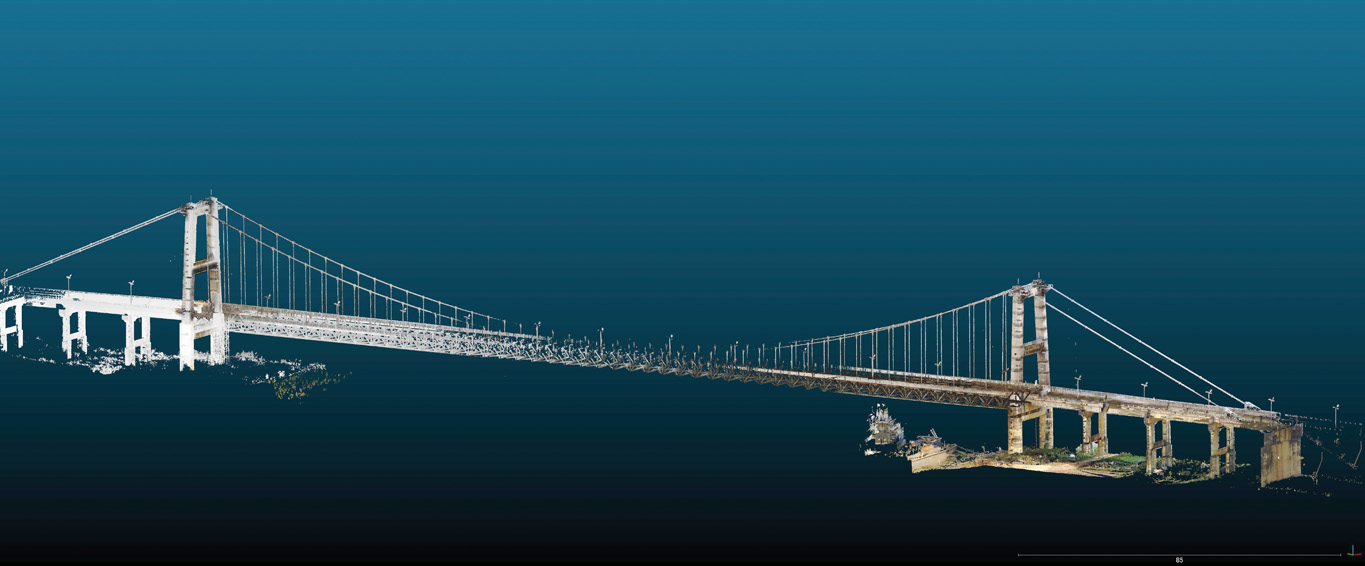The Myaung Mya Bridge collapsed in April 2018.
On April 1st 2018, two people were killed when the Myaung Mya Bridge, a 180-meter suspension bridge in Myanmar, collapsed due to severe corrosion of its main cable. Following the incident, the Myanmar government requested assistance with surveying its infrastructure and devising maintenance plans to prevent future accidents.
A team of researchers from the Institute of Industrial Science at The University of Tokyo who had already been working in the country for several years on roads, together with colleagues from Myanmar’s Yangon Technological University, were called in to help. They investigated the Myaung Mya Bridge collapse site, and surveyed the safety of seven other bridges of similar age and cable-type structure.
They found that the primary cause of the Myaung Mya Bridge collapse was water accumulation and corrosion at the anchorages that secure the main cables at each end, leading to cables rupturing.
“Infrastructure management is a major issue in Japan because many structures built in the 1970s or earlier are now showing damage,” says engineer Kohei Nagai from The University of Tokyo. “Japan would like to transfer its knowledge and technologies to developing countries that might face similar problems in the future.”
The researchers used a combination of the latest technologies, including 3D terrestrial laser scanners and computer simulations, to assess the state of the deformation of the bridges and locate any internal structural damage. They combined these tools with basic visual monitoring to observe cracks in large concrete support blocks, and used inclinometers to precisely measure the angle of support structures.
They did not find any severe damage in the other seven bridges. However, they did find some maintenance issues that need to be addressed, such as water accumulation at the main cable anchorages and damage to bearings.
For example, the researchers surveyed Twantay Bridge, located in Yangon, Myanmar’s largest city, and found that the main anchorage has moved by about 15cm due to soft ground conditions. Despite this, their structural analysis revealed that the main and hanger cables in the bridge have not been affected, so the bridge is currently safe. If the anchorage moves by 45cm or more, however, the main towers could give way.
The Ministry of Construction in Myanmar will use the results of this investigation to develop a plan to maintain and improve existing bridges and prevent future accidents. The findings may also inform future maintenance schemes for other Asian countries, many of which are undergoing a period of rapid construction.
For further information, contact:
Associate Professor Kohei Nagai | E-mail: [email protected]
Institute of Industrial Science
The University of Tokyo





